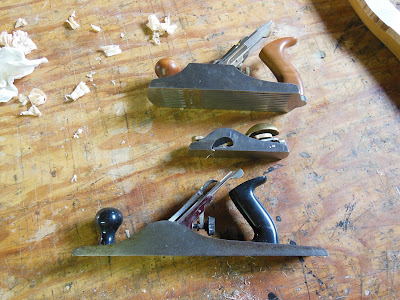Some stages in the making of the lower shelf of the pin-block stretcher assembly. Although I had originally intended to make this piece of the same construction as the original, I have been unable to obtain wood that satisfies me as to grain orientation. Above; a couple of five quarter, flat sawn German Beech planks, which in the lower photo have been re-sawn, and turned so that their radial faces are uppermost.
Below; the six pieces glued together, the adhesive is Urea Formaldehyde, which is not reversible. This type of construction is more stable than the original, which, although being radially sawn, was very badly twisted in service. I can't help but feel that this was due to more than just the pull of the strings.
Next post; the sled.
Below; the six pieces glued together, the adhesive is Urea Formaldehyde, which is not reversible. This type of construction is more stable than the original, which, although being radially sawn, was very badly twisted in service. I can't help but feel that this was due to more than just the pull of the strings.
The finished panel, jointed and planed up oversize. In its final incarnation this piece is tapered in longitudinal section, and tapered, bass to treble, in plan view.
Below, the panel is planed to the major thickness, before tapering, and cut to the plan view profile, allowing a few millimeters extra for final fitting. The original part is shown for comparison.Next post; the sled.








Comments
Post a Comment